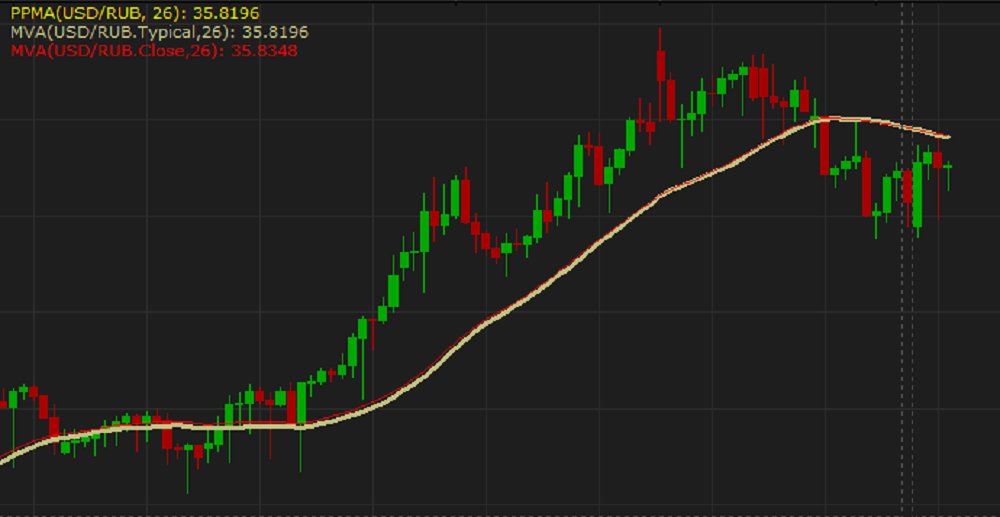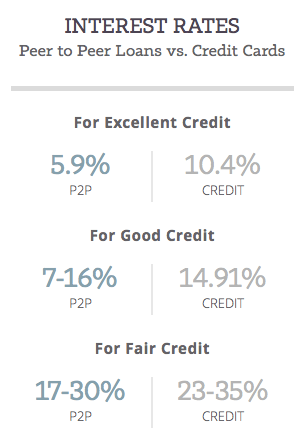Contents:
- National Income Determination and Multiplier – CBSE Notes for Class 12 Macro Economics
- Short Run Equilibrium Output:
- What is the paradox of thrift Is Saving Good or BadIs it actual 2 Give an instance
- Access Class 12 MacroeconomicsEconomics Chapter 4 – Determination of Income and Employment Notes
- Effects of an Autonomous Change on Equilibrium Demand in Product Market


I think the Indian government has led the way by rejecting American war aircraft I think the rest of the country can do the same, in all products. India faced a similar challenge during the peak of the 2008 recession. Luckily for us domestic demand picked up at the right time and bailed India out of the jaws of the recession.
Average Propensity To Save (APS): Definition & Formula – Investopedia
Average Propensity To Save (APS): Definition & Formula.
Posted: Sat, 25 Mar 2017 22:43:28 GMT [source]
In the above example the value of the extra output, 10, is distributed among various factors as factor payments and hence the income of the economy goes up by 10. Here, aggregate supply or the GDP is assumed to smoothly move up or down since they are unused resources of all types available. Whatever is the level of GDP, that much will be supplied and price level has no role to play. This kind of supply situation is shown by a 45° line. Explain the effect of an autonomous change in aggregate demand on income and output. If the equilibrium level of output is less than the full employment of output, then it is called as deficient demand.
National Income Determination and Multiplier – CBSE Notes for Class 12 Macro Economics
The LM curve depicts the set of all levels of earnings and rates of interest at which money provide equals cash demand. They would also argue that placing your cash right into a bank is one of the best factor for you and for the economic system as a result of banks aren’t designed to only sit in your money. The short answer is, if you squander what you save, you will end up with very little. It’s worth noting that Japan, another country with an extremely high savings rate, also encountered this problem.
This equation holds everything in balance with all other factors being normal. MSF is a window for banks to borrow from the RBI in an emergency situation when inter-bank liquidity dries up completely. BFI is a weighted average based on 11 international ship routes and three commodities – coal, iron ore and grain calculated by the Baltic Exchange, based in London, a key market for the global shipping business. There are no transaction fees and no need to give your real name. Bitcoin is a virtual currency that allows consumers to make electronic transactions by skipping the legal banking channels. Now suppose MPC is 0.5, people working in the investment industry will spend Rs 50 crore on new consumption goods.
The Paradox of Thrift is the theory that increased savings in the short term can reduce savings, or rather the ability to save, in the long term. The Paradox of Thrift arises out of the Keynesian notion of an aggregate demand-driven economy. To cut costs, they start to decrease prices, cut back wages, and lay off staff.
Thus the sum total of aggregates factor payments in the economy, national income, is equal to the aggregate value of the output of final goods, GDP. In an economy the autonomous investment is 60 and the marginal propensity to consume is 0.8. If the equilibrium level of income is 400, then the autonomous consumption is 30. From the following data about an economy, calculate equilibrium level of national income and total consumption expenditure at equilibrium level of national income. Thus, when everybody in the economy decides to save more, the equilibrium level of income falls and the total savings also fall. The whole economic system is boiled down to simply two markets, output and cash, and their respective supply and demand traits push the economic system in direction of an equilibrium level.
At decrease interest rates investment is higher, which translates into more complete output so the IS curve slopes downward and to the proper. In this case, the government might use fiscal coverage to influence mixture demand. The authorities may use monetary coverage, although, lately, many governments have delegated financial coverage to an independent Central Bank.
It is represented as a graph in which the IS and LM curves intersect to indicate the brief-run equilibrium between interest rates and output. The Keynesian Consumption Function dictates that revenue that is acquired is later used for consumption, which in flip becomes income, which is later used for consumption, and so on. However, in each transition point of earnings, a number of the cash would be saved, not all consumed. So this leads to the Keynesian multiplier 1/(1-MPC) the place MPC is the marginal propensity to devour or the slope of the AD within the AE mannequin exhibiting the relationship between consumption and nominal GDP, or income. Friedman’s work began to gain growing acceptance amongst lecturers after 1973, when stagflation – the simultaneous enhance in each inflation and unemployment – grew to become distinguished, just as he had predicted.
Short Run Equilibrium Output:
These adjustments can produce inflation or deflation as producers produce more or less of what’s demanded in the market. Given the Permanent Income Hypothesis, a constructive provide shock would increase the amount of transitory revenue within the economy, which would result in larger funding, leading to a rightward shift of the LRAS curve. When the economy goes into a recession, one of many first reactions customers have is to spend less and save more.
He argued that uncertainty brought on people and companies to stop spending and investing, and authorities must step in and spend money to get the economy again on track. Gross domestic product , or , is positioned on the horizontal axis, rising to the best. The IS curve depicts the set of all ranges of rates of interest and output at which complete funding equals total saving .
According to Skidelsky, Callaghan’s assertion is widely seen as marking the tip of the Keynesian age. Within Keynesian economics, the need to carry currency rather than mortgage it out is discussed beneath liquidity preference. The displacement of Keynesian pondering was pushed by those that leaned in the direction of purer free market policies, somewhat than the combined economy which require a significant role for presidency intervention. Efforts in opposition to Keynesianism happened on three fronts – in the academic world, in politics, and in the wider world of enterprise and public opinion. Capitalist economies may be subject to financial cycles – economic booms and recession.
So in other words total savings would equal investments. Aggregate Demand is very important for economists as it provides the tool to measure the strength of an economy. Usually, economists evaluate the total market for things produced in an economy for a year. So, if the aggregate demand is high then the economy is strong, meaning it can sell many products. Explain determination of equilibrium level of income using consumption plus investment approach. When marginal propensity to consume is greater than marginal propensity to save, the value of investment multiplier would be greater than 5.
- The aggregate demand function is parallel to the consumption function i.e., they have the same slope c.
- When this extra output is distributed among factors, the income of the economy goes up by (0.8)10 and consumption demand increases further by (0.8)2 10, once again creating excess demand of the same amount.
- This paradox could be defined by analyzing the place, and impact, of elevated financial savings in an financial system.
- Explain determination of equilibrium level of income using consumption plus investment approach.
Under MSF, banks can borrow funds up to 1% of their net demand and time liabilities . The given value of autonomous consumption is incorrect. Decision whether to invest or not The investor goes on making additional investments until M.E.I becomes equal to the rate of interest. If M.E.I is greater than the rate of interest, the investors has to increase the investment and if the rate is higher than the M.E.I, no investment is to be made. Explain the income propagation process due to change in investment.
What is the paradox of thrift Is Saving Good or BadIs it actual 2 Give an instance
This theory was closely criticized by non-Keynesian economists on the bottom that a rise in financial savings allows banks to lend extra. Because bonds have an inverse relationship to rates of interest, many shoppers don’t need to maintain an asset with a value that’s expected to say no. At the identical time, central financial institution efforts to spur financial exercise are hampered as they’re unable to lower rates of interest additional to incentivize buyers and shoppers.
In other words, when everyone increases their saving-income proportion, MPS, then aggregate demand falls as consumption reduces. In other phrases, lowering consumption and growing financial savings during a recession is like pouring gasoline on a fire. In this connection, Keynes identified ‘paradox of thrift’ and showed that as people turn out to be thriftier, they find yourself saving much less or same as earlier than. Firstly, if financial savings are held as cash, rather than being loaned out , then loanable funds do not enhance, and thus a recession could also be brought on – however this is because of holding cash, to not saving per se. The production of final goods employs factors such as labour, capital, land and organization. In the absence of indirect taxes or subsidies, the total value of the final goods output is distributed among different factors of production- wages, interest, rent, etc. whatever left is profit to the organization.
As the exports were falling, the Japanese consumers increased the saving rate, to brace themselves for the tight days ahead. This led to lesser spending in the local economy and further loss of business for the local Japanese establishments. So now not only the exporters were facing loss of sales but also the local businesses were losing business. This led to further recession something that lasted for more than a decade. But to Keynesian economists the answer is very simple. In an ideal scenario total income would be equal to total expenses and the savings would match the investments.
Access Class 12 MacroeconomicsEconomics Chapter 4 – Determination of Income and Employment Notes
Governments on the time would use the Phillips curve as a part of their fashions to calculate the anticipated price by way of inflation for a stimulus designed to restore full employment. According to Keynesian theory, a rise in funding or government spending increases consumers’ revenue, and they’re going to then spend more. The paradox is, narrowly speaking, that complete saving might fall due to individuals’ attempts to extend their saving, and, broadly talking, that increase in saving may be dangerous to an economic system.

Most economists concur with the view that what keeps the economic system going is consumption expenditure. Financial policy Central financial institution financial coverage will increase or decreases the cash provide to attempt to management inflation and keep away from depressions. Central banks set certain rates of interest that eventually have an effect on companies and the shoppers by making it roughly costly to borrow cash. Keynes pioneered the usage of national financial statistics . The paradox states that an increase in autonomous saving leads to a decrease in aggregate demand and thus a decrease in gross output which will in turn lower total saving.
Effects of an Autonomous Change on Equilibrium Demand in Product Market
In other words If the savings is increased then the equilibrium shifts against investments at a lower value, which finally affects the total income leading to a weakening of the economy. If due to some disturbance, we divert from that position, the economic forces will work in such a manner so as to drive us back to the original position, i.e., aggregate demand is equal to aggregate supply. As a result of increase in investment by Rs 125 crore national income increases by Rs 500 crore. Consumption expenditure at equilibrium level of national income. In the above figure , we have induced investment function which makes the investment curve upward positively sloping. With the increase in savings, not only the equilibrium income falls, but also savings decline.

What I feel is that once your give the meaning of paradox of thrift reaches the levels of your expenses, you are no more borrowing. Once income crosses your expense, you grow surplus.As the income increases, the savings grows exponentially. Becasue the person can not suddenly aquire new expenditure to be in the 70% spending limits. The problem is Japan is also in Central Banking, not in its saving rate.
The truth about eco-fascism – UnHerd
The truth about eco-fascism.
Posted: Sat, 12 Nov 2022 08:00:00 GMT [source]
What changes will take place to bring an economy in equilibrium if planned savings are greater than planned investment, and planned savings are less than planned investment. The ratio of change in national income (\(\Delta Y\)) due to change in investment (\(\Delta I\)) is known as multiplier . If individual ‘A’ decides to save more by reducing his consumption expenditure, the income of individual ‘B’ will be less and individual ‘B’ in turn will spend less. In the first stage of macroeconomics theory, we are taking the price level as fixed. Paradox of thrift refers to contrasting implications of savings to households and to economy as a whole.
This concept was suggested by Keynes wherein increased saving at individual levels will gradually lead to the slowdown of economy in terms of circular flow of income. Let us understand this statement with the help of the fig. The paradox of thrift refers to a situation in which people tend to save more money, thereby leading to a fall in aggregate savings of the economy as a whole.
Therefore, in the next production cycle, producers increase their planned output further by (0.8)10 to restore equilibrium. As people become more thrifty, they end up saving less or same as before in aggregate, known as paradox of thrift. In other words, if all the people of the economy increase the proportion of income they save, total value of savings in the economy will not increase it will either decrease or remain unchanged. The paradox states that an increase in autonomous saving results in a decrease in aggregate demand and thus a lower in gross output which is able to in turn lower whole saving.
The Paradox of Thrift is an economic concept which was made famous by John Maynard Keynes, though it is thought to have originated in the early 18th century. The basic concept is that if people save more in a recession, it will reduce consumption and thus aggregate demand will fall, impeding economic growth and, in fact, lowering the general. This will make rates of interest go down and result in an increase in lending and, therefore, spending. The Bush and Obama administrations rescued banks, different monetary establishments, and auto corporations with billions of dollars in loans.













